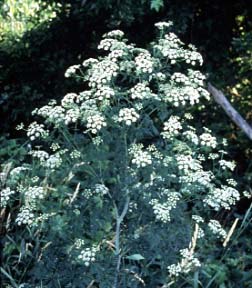
Alfalfa
 The time for 2nd cutting is getting closer, for some fields 2nd cutting has happened. Continue to monitor fields for potato leafhopper.
The time for 2nd cutting is getting closer, for some fields 2nd cutting has happened. Continue to monitor fields for potato leafhopper.
Click here for alfalfa insect scouting calendar
Click here for more information on Potato Leafhopper
Corn
 Our corn growth varies greatly throughout the county. Most of the county is between V2 and V6. However, there are some fields at V8 and beyond.
Our corn growth varies greatly throughout the county. Most of the county is between V2 and V6. However, there are some fields at V8 and beyond.
Click here for more information on the V3 – V4 growth stage
Click here for more information on the V5 – V6 growth stage

If you haven’t scouted your fields lately, check them now for slugs. Slugs have been very active this year, even when we had warmer temps. I know several fields throughout the county that have been treated.
Click here for slug information
Beans
Beans just aren’t looking very good, for a variety of reasons – emergence problems, stand counts, too much water, not enough rain, SLUGS (!), poor root development, etc. Make sure you are scouting your fields now to determine plant health. A 4 year comparison of Ohio eFields on-farm research has shown that soybean plant populations as low as 80,000 plants per acre can produce yield equal to or greater than plant populations of 120,000 and 160,000.
Click here to see research summary.

As I mentioned above in the corn section, if you haven’t scouted your fields lately, check them now for slugs. Slugs have been very active this year, even when we had warmer temps. I know several fields throughout the county that have been treated.
Click here for slug information
Wheat
Wheat maturity is delayed a bit this year. Mother nature, growth regulator applications or fungicide applications all could play a part in this. If you are planning on double-crop soybeans remember to pay close attention to herbicide restrictions prior to planting. Table 23 from the Ohio Weed Control guide lists these restrictions.
County Rainfall Update













 Economic Threshold: Treatment may be necessary if defoliation is greater than 40 percent on slow growing plants or if plants are being killed.
Economic Threshold: Treatment may be necessary if defoliation is greater than 40 percent on slow growing plants or if plants are being killed.


